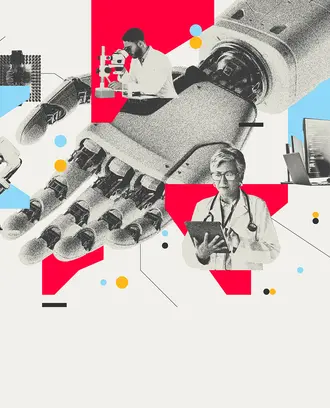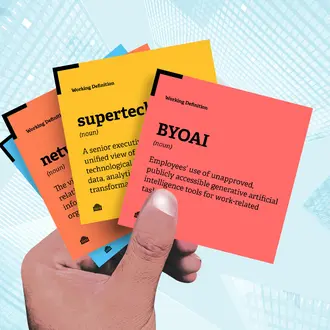Credit: Catalin Pop / Unsplash
How 7 leaders manage stress, burnout, and their employees’ well-being
When Zipcar co-founder Robin Chase isn’t in a boardroom or behind a speaker’s lectern, you can find her in the garden or near a knitting basket. The reason: Those activities are “almost effortless and provide concrete satisfaction in a short period of time,” said Chase, SM ’86, now chairperson for internet and telecommunications company Tucows.
Doug Zingale, SB ’72, makes time for family, exercise, and weekly massages in between his responsibilities as co-founder and managing partner at Blue Goose Capital.
“These things take me away from my internal business dialogue of problems and solutions,” Zingale said. “You can’t stay fully engaged with business all the time without having your creativity and productivity suffer.”
In our My Idea Made to Matter and Bias Cut series, we ask leaders about ways they tend to their mental health and encourage well-being among their employees. Here’s a look at how senior leaders relax, recharge, and encourage their teams to do the same.
Exercise and meditation
I work out every day from 6 -7 a.m. or 7-8 p.m., and I try to have a good mix of cardio and weightlifting. I have a standing treadmill desk where I try to spend at least five hours every day, and I do intermittent fasting from 8 p.m. to noon the next day. I eat only two meals and do some healthy snacking in the meanwhile. I started because my co-founder did, and then I read up on the science behind it, and it made a lot of sense. That and exercise help me stay healthy and productive. — Andrew Antos, founder and CEO at AI document management company Klarity
I practice the SKY breath meditation daily, taught by the Art of Living Foundation. Last year, I took classes with the IFS Institute. There I was: an engineer and business leader among therapists and psychologists, learning more about being human. — Patricia (Lopes) Hargil, SM ’98, vice president of transformation, and diversity and inclusion officer, Messer Americas
I’ve been working toward becoming a Gyrotonic instructor. It’s an exercise methodology developed in Germany that integrates breath and movement through spiral articulation of all the joints in the human body. This method, once affectionately referred to as “yoga for dancers,” is tough and requires a lifelong commitment. It helps me manage my osteoarthritis, which, as I age, tends to misbehave more often. — Andrea de Souza, MBA ’13, global head of data sciences and engineering, Eli Lilly and Co.
Related Articles
Recharging offline through real-world engagement
On most days, I take long walks through Brooklyn, often in Brooklyn Bridge Park along the waterfront, and I use those walks to call family and friends. Or I’ll bring a bag, stop by my local bakery, coffee-bean guy, and florist, and make my apartment smell good. — Cindy McLaughlin, MBA ’02, head of product at low-carbon technology company CarbonBuilt
I obsess about getting 7-8 hours of sleep a night. If I can pick only one, that’s it. I also block my calendar every Tuesday and Thursday at 6 p.m., and 10 a.m. on Saturday for a circuit training class. And my husband and I (empty nesters now) play a board or card game almost every night to wind down. — Jackie Yeaney, MBA ’96, board member, advisor, and former chief marketing officer at software companies Tableau and Red Hat
Reinforcing weak-tie relationships, and “anytime vacations” for employees
Hargil — I am a demanding leader, but I know a car does not run on an empty tank. I cannot be my best self and bring my best game when I am not taking care of my well-being. And it is the same for my staff. I encourage them to pursue what nurtures them and to take care of themselves.
McLaughlin — My staff is all remote, and we have an “anytime vacation” policy. If they want to take an afternoon or a few days off for any reason, at any time, they’re welcome to. If they want to do our meetings as walking meetings, we pop on headphones and do that, too. We often talk about our lives outside work, give each other space where needed, and support each other through challenging times.
Yeaney — In my role as chief marketing officer of Tableau, we put employee well-being front and center on the agenda and tried lots of angles, including things like coordinated days off, flexible work schedules, time off if needed, resilience training, etc. One concept that worked well for us was working to reinforce our weak ties. Our strong ties remained strong these past few years, but not casually seeing folks in the hallway really caused our weak-tie relationships to fade. We orchestrated lightweight, fun ways for people to connect virtually with others they didn’t see very often.
de Souza — For my staff, we lead several of our meetings with a shared-accountability approach, where we share well-being moments of the week. … Just the gentle reminder of asking has set the stage for prioritizing well-being as part of our leadership development.
Read next: How 8 innovative leaders keep track of ideas



